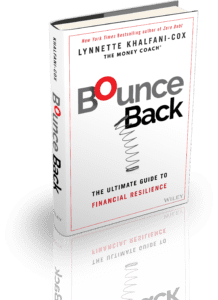Running your own business comes with plenty of challenges, but few tasks are as universally crucial as retirement planning. While you’re busy juggling clients, invoices, and the next big idea, figuring out which retirement plan makes the most sense can feel like just another item on a never-ending to-do list. But here’s the thing: the earlier you nail this down, the better off you’ll be in the long run.
For self-employed individuals, the question often boils down to whether a Solo 401k or a SEP IRA is the right fit. Both plans allow you to save for retirement while reducing your tax burden, and with the IRS updating its contribution limits for 2025, there’s never been a better time to dive in and make an informed decision. The right plan can do more than safeguard your financial future—it can help you save on taxes now and keep more of the money you’ve worked so hard to earn.
The Solo 401k is one of the most versatile retirement plans available to self-employed individuals. It’s designed for those who work for themselves, with no employees other than a spouse. For 2025, the contribution limits have increased to $23,500 for employee deferrals, with an additional $7,500 catch-up contribution for those aged 50 or older. On top of that, you can contribute as the employer, adding up to 25 percent of your compensation for a combined cap of $70,000. If both you and your spouse are part of the business, the potential combined contributions can reach an impressive $140,000.
What sets the Solo 401k apart is the ability to contribute both as an employee and an employer, giving you incredible flexibility to maximize your savings. This dual structure means that even if your income isn’t sky-high, you can still make significant contributions, especially when compared to the SEP IRA. Another major benefit of the Solo 401k is the option to include a Roth component, allowing you to make after-tax contributions that grow tax-free. If you expect to be in a higher tax bracket in the future, this can be a game-changer.
The SEP IRA, on the other hand, is simpler to set up and manage. It’s a retirement plan designed for business owners and their employees, but it works especially well for sole proprietors. For 2025, the SEP IRA contribution limit has been raised to $70,000, or 25 percent of your W2 compensation, whichever is lower. Contributions are made entirely by the employer, which means you can’t defer salary like you can with a Solo 401k. While this makes the SEP IRA straightforward, it can be less flexible if your goal is to save as much as possible on a moderate income.
One of the key differences between these two plans is how they handle early access to your funds. The Solo 401k allows you to take loans from your account, up to $50,000 or 50 percent of the balance, whichever is less. This feature provides a level of liquidity that can be invaluable if you need to invest in your business or cover an unexpected expense. The SEP IRA doesn’t allow loans, and early withdrawals before age 59½ are subject to income tax and a 10 percent penalty. If you value having access to your retirement funds as a backup, the Solo 401k clearly has the edge.
When it comes to tax deductions, both plans offer significant opportunities, but the Solo 401k is often the winner for those who want to optimize their tax strategy. Because it allows for both employee deferrals and employer contributions, it provides more ways to reduce taxable income. For example, with a Solo 401k, you can defer up to the employee contribution limit even if your total compensation is relatively low. By contrast, the SEP IRA’s contributions are calculated as a percentage of W2 compensation, which can limit your options if your income fluctuates.
Another advantage of the Solo 401k is the ability to consolidate your retirement accounts. If you’ve accumulated various IRAs or old 401k accounts from previous jobs, you can roll them into a Solo 401k for easier management. This can simplify your financial life and give you a clearer picture of your retirement savings. While SEP IRAs also allow rollovers, the Solo 401k’s broader contribution structure and loan options make it a more appealing choice for many self-employed individuals.
Both plans offer access to a wide range of investment options, from stocks and bonds to mutual funds and ETFs. However, some Solo 401k providers allow alternative investments, such as real estate, crypto, or private equity, giving you even more flexibility to grow your wealth. Whether you’re a conservative investor or someone who likes to take calculated risks, both plans can accommodate your preferences.
The simplicity of the SEP IRA makes it a strong contender for those who want to avoid paperwork and administrative tasks. There’s no annual filing requirement, and the setup process is quick and straightforward. By contrast, the Solo 401k requires a bit more legwork, especially if your account balance exceeds $250,000, in which case you’ll need to file IRS Form 5500 annually. If you want to include loan options in your Solo 401k, you may also need to work with a third-party administrator, which can add to the complexity and cost.
Despite these differences, both plans serve the same essential purpose: helping you save for retirement while reducing your tax liability. Choosing the right one depends on your specific needs and financial goals. If you’re self-employed with no employees and want maximum flexibility, higher contribution limits, and the option to borrow from your account, the Solo 401k is likely the better choice. On the other hand, if you prefer simplicity and have higher, more stable income, the SEP IRA might be a better fit.
Retirement planning may not be the most glamorous part of running a business, but it’s one of the most important. The decisions you make today can have a profound impact on your financial security later in life. Whether you opt for a Solo 401k or a SEP IRA, the most critical step is to get started. The longer your money has to grow, the better positioned you’ll be to enjoy the fruits of your hard work when it’s finally time to slow down.
For self-employed individuals, the freedom to design your own retirement plan is both a responsibility and a privilege. The Solo 401k and SEP IRA each offer unique benefits, but only you can decide which one aligns best with your goals. Whichever route you choose, make it a priority.
Joe DiSanto is a former Emmy-winning post-production executive turned financial strategist. After building a successful career in Los Angeles, growing his company to 30+ employees, and managing multiple real estate investments, he semi-retired at 43. Now, through Play Louder (playlouder.com), he provides fractional CFO services and financial coaching to help entrepreneurs and creatives take control of their financial futures.









